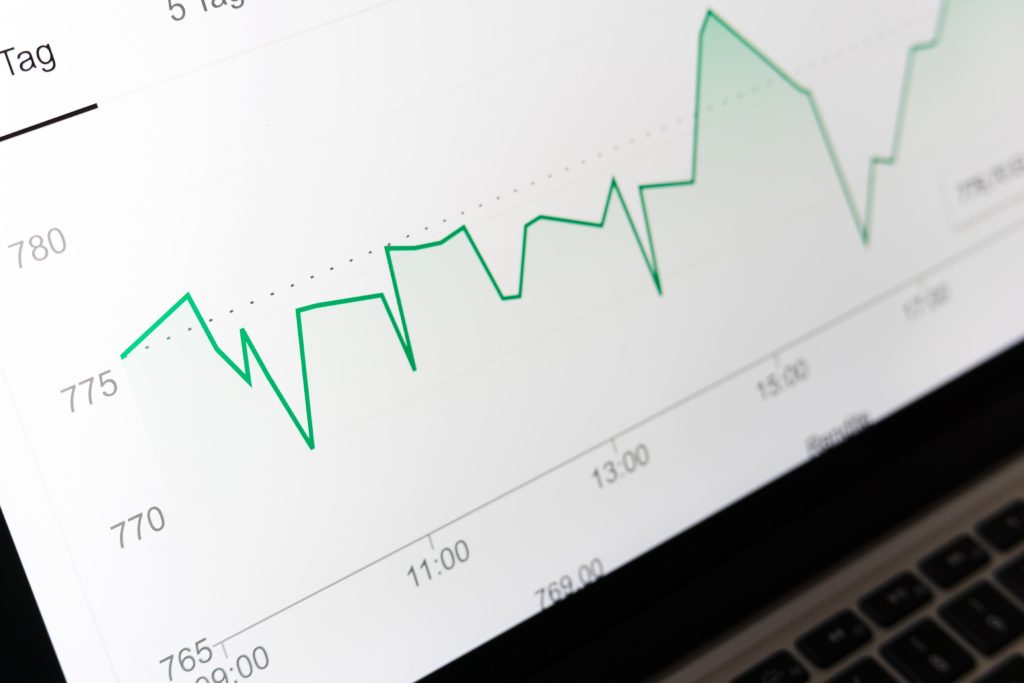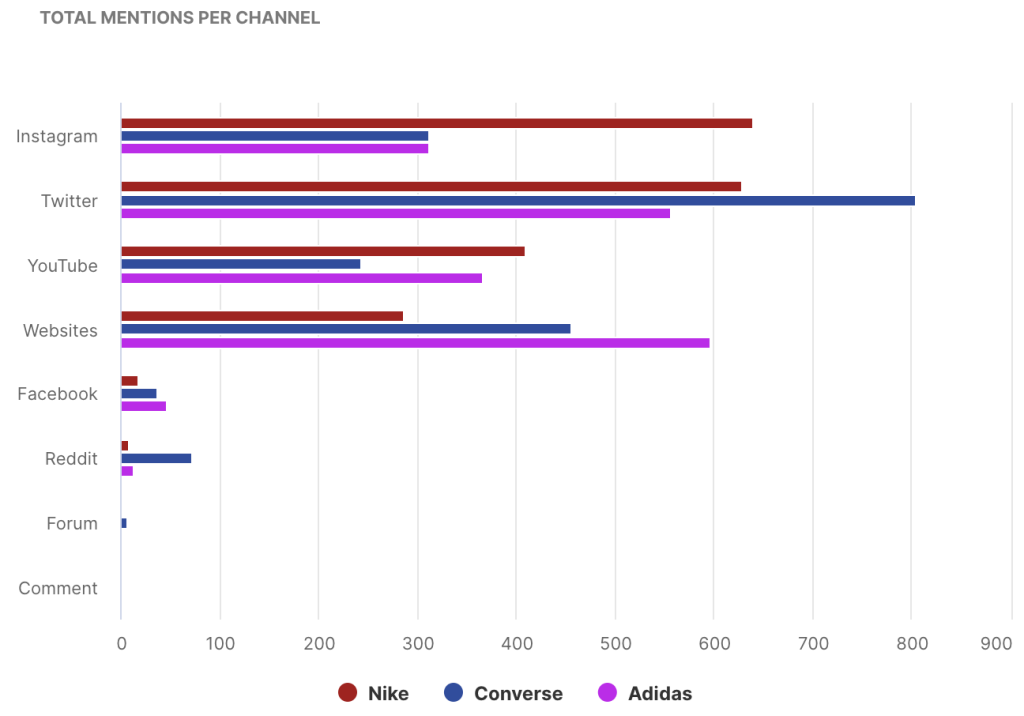Have you ever thought that media monitoring is a buzzword? If yes, it’s high time to debunk this myth.
It’s pretty evident that most businesses experienced a vast (and unexpected) shift to digital last year. This influenced consumer behavior, as over 2.14 billion people worldwide now purchase goods and services online daily.
But being present online isn’t enough. To break through your competitors and reach potential (and existing) customers with your message, you need to boost your marketing activities and track what clients are saying about your brand on the Internet. Thankfully you don’t have to hire new employees who work day and night – the only thing you need is a powerful media monitoring system.
In this blog you’ll find out what media monitoring is, how it can help your business, how to conduct it and, if you make it till the end, you’ll get our recommendations on the best tools that can help you in all of this.
Let’s dig in!
What is Media Monitoring?
In a nutshell, media monitoring is the process of searching for information about a particular topic regarding your brand, in print or on digital platforms.
Mostly it’s based on scanning specific keywords related to your company (or your competitors). What is more, it’s not an entirely new concept and strategy. However, it has gained popularity with the development of the Internet and online businesses. Before that, PR specialists had to look for mentions of the companies they worked for in traditional media (such as press, television, or radio). A considerable part of this tedious work was done manually, consuming lots of time and attention.
Luckily, the digital world provides a variety of marketing automation tools and tactics. So what exactly does it mean in the digital world? It’s also the process of listening to what people say about your brand. However, you can track mentions across the web on any existing and publicly available website – also on yours, obviously. But to do it right, you should be using pagerduty alternatives to always have an eye on your website.
Read 6 reasons Why You Should Use Media Monitoring

The real difference between media monitoring and social listening
Media monitoring and social listening go hand to hand, like peanut butter and jelly. The first one means the essential process of tracking mentions across the web and crawling every source available to search for the keywords you chose. It aims to collect data.
Social listening goes one step further and enables you to interpret the data according to customer behavior. With features like sentiment analysis, you can understand what’s behind a specific comment and actively improve your marketing strategy. You can also react to it and respond in time.
Read Social Listening: Proven Hacks, Strategies, and Tools
Why Does Media Monitoring Matter?
It’s estimated that by the year 2040, an enormous 95% of all purchases will be made through eCommerce. With the switch to digital, customers have started to interact with each other on websites, forums, and other social media platforms. They have gained a new information source to exchange their experiences with particular products and services among people who are considering to make the same purchases. This means that they have an option to get an additional opinion, apart from the things served to them by marketers and salespeople.
And this is not the only benefit. Here’s a list of plus points for media monitoring that will make a considerable difference for your business.
Prevent potential crises
Anonymity enables unfiltered feedback. People feel free to write about bad customer experiences, if they don’t have to write the comment with their real name. That’s why it has become essential for companies to track every mention across the web. It’s scientifically proven that people are more willing to share negative feedback rather than positive, so leaving such comments without a response from the brand can lead to a crisis.
However, media monitoring gives you the opportunity to change the situation to actually benefit your brand image. When you get the information about a potential crisis at the right time, you can react immediately. In this way you can prevent additional negative comments or a further outburst of frustration from a customer.
Read Crisis Management Plan: How to Keep Your Business Afloat?

Media monitoring tracks mentions when you sleep
Your business probably isn’t a 24/7 McDrive, but rather it has specific working hours. However, when PR managers and marketing specialists are off guard, clients can be wide awake and talking about your business on social media.
Users can add comments about your company non-stop – especially if you have an international business. Because of that, to track every mention, you would have to hire a few specialists to work day and night, and they still probably wouldn’t catch every mention. It sounds like chaos, doesn’t it? Using media monitoring tools can facilitate such processes. These tools can become your eyes and ears, operating at any times, without your input.
Have an eye (not only) on the most popular channels
Media monitoring enables you to follow mentions and keywords whenever and wherever discussion about your brand takes place. Research shows that 47% of users share their feedback on the seller’s website, while a whopping 31% write about their experiences on Facebook. The next most common places to leave feedback are WhatsApp (17%), so you should have some Whatsapp message templates handy, and Instagram (12%). But there are also many more left, like various forums, YouTube, Twitter, Google My Business software, etc. And honestly, can you be sure that there is at least one of these where your customers won’t leave a comment on?
Of course not.
Putting all your eggs in one basket, is never a good idea. In this context, focusing all your attention on one source or just a number of sources may lead to missing out on a lot of useful info. On the other hand, following all of them manually is literally impossible. This is where media monitoring tools jump in.
How to Perform Media Monitoring
Piece of cake!
…once you set up everything and start tracking results. Let us explain how to get things started.
#1 Decide which subjects you want to track
The results you’re going to receive depend on the way you set up the system. The tool will track every keyword you enter, so having a specific plan first is key. But we’ll get back to choosing keywords later. Firstly, let’s focus on picking the right areas to follow.

What exactly can you track?
- Mentions about your brand. It’s an absolute must-have and the first thing you should set. It can include your company name, exact product or service, branded hashtags, and key people (not only a CEO but also those who are active on Twitter, etc.).
- Brand-related terms. It’s about following phrases someone would use while looking for your service or product. For example, if you’re a hotel owner, think about “where to stay in…”, “top places near…”, “recommended hotels in…”, etc.
- Industry trends. This can give you a broader perspective on the development of your niche. If you want your company to be competitive and build future-facing strategies for your brand’s growth, follow trends.
- Your partners, vendors, and coworkers – because their reputation has a direct influence on your business and can affect your company’s image. If anything bad happens to a coworker, you can react immediately and prevent a crisis such as losing your customers’ trust.
Some media monitoring tools can also track hashtag performance. This is a powerful feature because using the right hashtags can boost your marketing by increasing customer engagement. They can also help the target audience to find your brand and create loyal digital communities.
Read 8 Features That Will Up Your Media Monitoring Game
#2 Monitor your competitors
The enemy never sleeps, you can say that again. Thankfully, media monitoring tools don’t need to rest either, so you can follow any mentions containing your competition all day, every day.
When you know what people say about your competitors, you can adjust your own actions accordingly to outperform them. Focus primarily on the negative comments and leverage these aspects in your brand so that you will be able to attract those people who have had bad experiences with your rivals.

A good media monitoring tool will allow you to compare your share of voice and other facets of your business with your competitors:
- Looking at the share of voice can make you aware of how much media attention is grabbed by your brand (and the product/services you offer) and how much light your opponents are hogging from you.
- Competitive analysis is another key pillar. You can set multiple queries to compare and learn how your products or even whole campaigns are performing against your competitors. Such insights can bring you benefits in the long run.
Evaluating your own and your competitors’ actions should be an integral part of your growth strategy. Thanks to that, you can provide better customer experiences, attract new customers, and become a leader. Plus, it’s always better to learn from your competitors’ stumbles than from your own mistakes. ?
#3 Set the right keywords and exclude irrelevant ones
Media monitoring can provide you with vast amounts of information. To track only those that can genuinely provide you with meaningful insights, you need to narrow down the number of words and phrases you follow. If not, you might drown in a sea of data.
What can happen if you choose the wrong keywords? You won’t get the insights you need because the data you’ve collected will be just a bunch of irrelevant information. On the other hand, if you don’t track enough phrases, you might not be able to collect enough mentions to analyze everything properly.
So what are some good practices that can help you choose the right keywords?
- Track only a few industry-related terms that are the most popular searches.
- Besides tracking simple phrases, use related keywords to specify their context and narrow down the results. Try to come up with as many ideas as possible and add them all.
- Think whether you want to receive a notification about mentions in every language in the world. If not, you can narrow down searches to exclude potentially irrelevant results.
- Boolean operators are there to help you with excluding unnecessary phrases. You can use words like “or”, “and”, or “and not” in order to specify what results you expect to get.
#4 Gather the results, analyze, and react to what you see
Last but not least is evaluation and analysis. The whole media monitoring concept wouldn’t make much sense if the final data weren’t processed, interpreted, and analyzed thoroughly.
Comparing your results to your competitors’ isn’t everything. You can also look at how well your brand is evolving by compiling your media performance over the course of months or years.
Besides, you can truly understand how customers feel about your brand. We’ve already mentioned the Sentiment Analysis feature, which is an automatic interpretation of whether the collected text data is positive, neutral, or negative. That gives you a complex image of the attitudes, emotions, and opinions of users who have written something about your brand. It’s more than just data it enriches the raw information with context to better understand customers’ experiences.
Read How to Conduct Sentiment Analysis to Improve Customer Experience?
Who Can Benefit the Most from Media Monitoring?
Small and medium businesses often don’t have the financial resources to hire a whole PR agency to take care of their digital marketing and media monitoring. It’s mostly an option that is only available to big players – and how can you become a leader without robust promotion? Good news! That’s precisely what media monitoring was created for. It’s a solution that almost every company can afford and use in-house.
Media monitoring is for every business present online, no matter the industry. It’s crucial at every stage of the journey because people are either talking about you or looking for a solution that you offer.
SMEs – or what’s the role of media monitoring for small & medium enterprises
If you want to build a strong position on the market and establish your company’s reputation, media monitoring should become an integral part of your marketing strategy. It can help you raise brand awareness and recognition by showing you places where your potential customers are active. You can reach out to them, engage with them and start building a community around your brand. By earning media attention, you can bring new prospects to your company as well as investors and partners. Responding to your customers’ feedback can also leverage the credibility of your brand.
Plus, you can see what your competitors are doing and consider implementing similar strategies for your business. Investing in robust software to do all of these things is more affordable for startups and SMEs. It can help analyze the ROI from any marketing digital projects, so it’s an investment rather than an expense.
Read Three Ways to Use Media Monitoring to Grow Your Sales
The reason behind using media monitoring for enterprises
As a large company, you can probably afford to hire an external PR agency to take care of your marketing. However, ask yourself first if it’s worth the money.
Media monitoring tools send you notifications right away whenever something important happens. PR agencies usually work at specific hours and won’t provide you with relevant information if any incident occurs outside of office hours, and that might cost you a lot! Sometimes you need to answer a particular issue straight away to prevent a crisis, and your reaction can’t wait until the next day. If you have an in-house solution, you can connect it to the communication channels you use and check notifications whenever you need.
Also, if your brand has an established position and many customers buy your products, there might be a lot of buzz regarding your company. The main challenge you need to face is narrowing down the mentions you follow and responding only to those which are truly vital for your business. Media monitoring tools allow you to exclude some phrases or narrow them down thanks to advanced filter options in order to give you the best results.
Automated reports might also come in handy. At the end of the day, what you need is relevant data, and finding unique information manually could take ages.
Read Media Monitoring Reports: All You Need to Know
Any company working with influencers
Online shopping is one of the most popular activities, and it’s going to grow even more. In 2021, worldwide eCommerce sales amounted to $4.9 trillion. What is more, e-retail revenues are projected to reach $7.4 trillion in 2025!
If your company is a part of the e-commerce market, you’re probably already working with influencers. It’s not just a temporary trend, but a new tactic that can improve your marketing efforts. Determ allows you to analyze which online celebrities might be worth collaborating with. Features such as influencer dashboards, filtering influencers by source, and picking the most engaged influencers can be game-changers in this regard. You can get to know top languages and locations and your most engaging posts as well! All to better understand the causes of your marketing campaigns’ successes (or failures).
Read Are you using social listening tools to find influencers? Because you should.

PR freelancers and agencies
This group is probably the most obvious one. Every professional PR manager needs to have an inside look into the brand’s performance and what is said about the company publicly. Automation is the key to gathering all the relevant data you might need to show the good results of your marketing actions on paper or look for room to improve things that are not working well.
You can dedicate less time to figuring out the information chaos and focus on the most important strategies. Besides, as a PR specialist, you can benchmark earned media and react immediately to negative publications.
Hiring an Agency or Doing Media Monitoring Yourself – Which is Better?
The previous section listed how each business type can use media monitoring for its unique growth strategy. To dispel any doubts, here’s a list of results you can achieve by using social listening tools yourself instead of spending money on hiring a whole agency.
What does a powerful media monitoring tool do?
- Provides data in clear dashboards to make it accessible, easy to interpret, and simple to compare.
- Makes you save money by improving relations with clients. Constantly analyzing how people perceive your brand can help you identify their pain points, improve upon them, and keep customers attracted to your company. Research shows that it costs 5-6 times as much to acquire a new customer than to retain an existing one. It’s an enormous number! Every business should keep in mind that it’s cheaper to retarget people who are already your clients instead of reaching out to new ones.
- Locates where your target audience is, provides info to get to know them better, reach out to them, and turn them into customers.
- Sends notifications about any negative feedback, making it possible for you to respond to it, and manage the risk and your reputation.
- Helps create loyal communities and turn customers into brand ambassadors. Helps in finding influencers to work with and track their performance.
- Get to know which strategies your competitors are implementing and plan your future actions accordingly.
- Monitor the results of your PR activities (campaigns, social media management, and more).
Read 5 Media Monitoring Tools You Don’t Want to Miss Out
In a Nutshell
Media monitoring is essential for any organization present online. It is said that nowadays if your brand isn’t available online, it doesn’t exist.
Keep in mind that you don’t necessarily need to run social media profiles to track mentions about your brand. Media monitoring is mostly a tactic used for tracking what others say about you – so even if your company doesn’t have a website, it might be essential to follow related keywords. Maybe you’re not present online, but your customers are. So if you’re forward-thinking and looking for chances to seize, then media monitoring may be the key to success.



